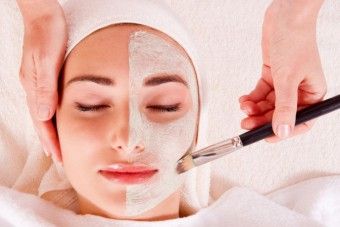No one will deny that a person’s calling card is his face. It is on him that the very first glance falls and only then is the whole appearance evaluated. The condition of the skin, how much it will be beautiful and well-groomed depends on the correctness and timeliness of cell renewal, due to which the epidermis layers become younger.

And then peeling comes to the rescue – a procedure by which exfoliation of dead cells is performed, clarification and even removal of age spots and freckles, improvement of the general condition of the skin.
Currently, there are many different types of peeling, many of them can be carried out independently at home, but there are those that you should entrust only to an experienced cosmetologist, for example, peeling TC. This procedure has recently been very popular, but is it safe and effective and in which cases is it worth it?
What it is?
Many have heard about this method of rejuvenation and cleansing of the face and body like peeling TC, but they know what it is in most cases only those who have already tried it on themselves. At its core, this cosmetic procedure is a chemical peeling because it is carried out with trichloroacetic acid..
Depending on how deeply the effect of the main component penetrates, it can be:
- Superficial;
- Median;
- Deep.
The principal difference between these three procedures is the concentration of the reagent and its exposure time.
Superficial cleansing (Easy TCA Peel) is performed using 15% trichloroacetic acid with the addition of ascorbic and citric acids for the best penetration of active substances and improve blood microcirculation.
The composition is applied to the face for only 10-15 minutes, until a skin reaction appears in the form of erythema. The main objective of this procedure is to achieve exfoliation, i.e. exfoliate and get a keratolytic effect.
Median peeling (TCA Peel solution) with trichloroacetic acid is a very painful and rather long procedure. The acid concentration during this procedure reaches 20%. Also, the active substance used for the median TSA peeling contains a special complex of amino acids that has anti-inflammatory and immunomodulating effects.
The main sign of the effective implementation of this procedure is the appearance of the so-called frost effect on the face – a uniform white film similar to hoarfrost. It represents the denatured protein protein molecules of the cells of the intercellular matrix and dermis. At its core, this cleansing and rejuvenation is a controlled burn of the skin of the face with the help of a chemical substance..
Deep cleaning (Only Touch Peel) is carried out using a concentrated 40% solution of trichloroacetic acid with the addition of phytic acid, which softens the action of the main agent and improves the regenerative properties of the skin. This type of peeling is done pointwise, only on limited areas of the skin..
What effect does trichloroacetic acid have?
When deciding to carry out such a procedure, it is necessary to clearly understand what exactly the effect of acid on the skin.
So, chemical peeling using trichloroacetic acid allows you to:
- Exfoliate dead skin cells, cleanse the skin, make it smooth and fresh;
- Accelerate the process of cell regeneration, increase their proliferation (the birth of new ones) and the barrier properties of the skin;
- Reduce fat secretion, narrow pores;
- Stimulate collagen production, strengthen metabolic processes;
In addition, the use of acid allows you to destroy all the negative flora that causes inflammatory processes in the skin.
Indications and contraindications

the presence of fine wrinkles in the cheeks, eyes, forehead and lips;
increased oily skin and enlarged pores;
scars (effects of acne);
signs of photoaging and age-related changes.
The procedure is contraindicated in the following cases:
- the presence of keloid scars on the face;
- viral lesions (for example, herpetic infection);
- inflammatory processes in the active stage;
- too deep pigmentation;
- endocrine system diseases;
- breastfeeding, pregnancy;
- allergic conditions;
- the presence of malignant neoplasms;
- dermatological diseases and violations of the integrity of the skin.
Even if you have all the indications for the use of TC peeling, there are no contraindications listed above, you must be sure that there is no individual intolerance or hypersensitivity to the components of the chemical composition.
Carrying out such a procedure is best entrusted to an experienced cosmetologist and in no case should you try to peel your TCA yourself at home, as this can lead to serious side effects and consequences. It is important to understand that a very aggressive chemical is used to carry it out..
If used improperly or ineptly, this acid can cause serious harm to health. Among the most common effects of TCA peeling can be found: eye damage, increased pigmentation, severe skin burns.
Order of conduct
Before the procedure, the face is treated with lotion, the remains of makeup and fat are carefully removed, after which the chemical composition is applied. The sensations during the first application of the composition can be different, for some patients this does not cause any unpleasant sensations, while others may experience a burning sensation and pain.
After the procedure, the vascular reaction and redness may disappear and increase again within 2-4 days. On the 5-6th day, brown crusts appear, which in no case can not be torn off so as not to leave scars. You can avoid this complication if you lubricate the skin with a nourishing cream to soften the crusts. Will have to endure for 4-5 days, then they will disappear, exposing young, tender and toned skin of a pinkish tint underneath.
In general, the recovery period is 7-10 days, so those patients who cannot afford to fall out of the normal rhythm of life for such a long period of time should prefer more gentle methods of skin rejuvenation, for example, milk or salicylic facial cleansing.
Preliminary preparation

In addition, at least a month before chemical peeling, you should abandon the use of scrubs, hair removal, eyebrow correction, visiting a bathhouse and a solarium. 3-4 days before the procedure, it is recommended to take antiviral drugs.
After the procedure, patients are advised to use creams with fruit acids and moisturizing sunscreens for 14-20 days. Facial care during this period should be thorough and at the same time very gentle.
It is best to consult with a cosmetologist who cleansed the face. It is important to consider that skin care after TCA peeling will largely depend on the individual characteristics of the body.










